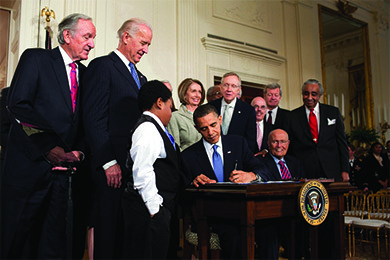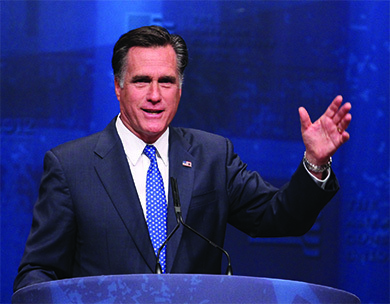| << Chapter < Page | Chapter >> Page > |
More important for Obama supporters than his attempts to restore the economy was that he fulfill his promise to enact comprehensive healthcare reform. Many assumed such reforms would move quickly through Congress, since Democrats had comfortable majorities in both houses, and both Obama and McCain had campaigned on healthcare reform. However, as had occurred years before during President Clintons first term, opposition groups saw attempts at reform as an opportunity to put the political brakes on the Obama presidency. After months of political wrangling and condemnations of the healthcare reform plan as socialism, the Patient Protection and Affordable Care Act ( [link] ) was passed and signed into law.
The act, which created the program known as Obamacare , represented the first significant overhaul of the American healthcare system since the passage of Medicaid in 1965. Its goals were to provide all Americans with access to affordable health insurance, to require that everyone in the United States acquire some form of health insurance, and to lower the costs of healthcare. The plan, which made use of government funding, created private insurance company exchanges to market various insurance packages to enrollees.

Although the plan implemented the market-based reforms that they had supported for years, Republicans refused to vote for it. Following its passage, they called numerous times for its repeal, and more than twenty-four states sued the federal government to stop its implementation. Discontent over the Affordable Care Act helped the Republicans capture the majority in the House of Representatives in the 2010 midterm elections. It also helped spawn the Tea Party , a conservative movement focused primarily on limiting government spending and the size of the federal government.
By the 2012 presidential election, the Republicans, convinced Obama was vulnerable because of opposition to his healthcare program and a weak economy, nominated Mitt Romney, a well-known business executive-turned politician who had earlier signed healthcare reform into state law as governor of Massachusetts ( [link] ). Romney had unsuccessfully challenged McCain for the Republican nomination in 2008, but by 2012, he had remade himself politically by moving towards the partys right wing and its newly created Tea Party faction, which was pulling the traditional conservative base further to the right with its strong opposition to abortion, gun control, and immigration.


Notification Switch
Would you like to follow the 'U.s. history' conversation and receive update notifications?